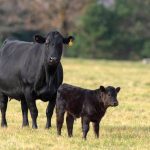
EU governments fail to agree on gene-editing rules despite patent exception

Funding to help make cattle data gathering easier
Partnership between Angus and Holstein association will look at sharing trait information and how to automate data management

At Ag in Motion: Soybean proponents still eye western expansion
Crop seen as a good add to rotations -- if conditions are right

Green light for gene editing heralds new age in farming
New guidance from Ottawa puts gene-edited varieties on par with their conventionally bred cousins

Gene-edited crops clear CFIA’s regulatory bar
Agency guidance puts gene editing on level of conventional breeding

Wild wheat genes can make crop more tolerant to extreme heat
Large trial tested 149 wheat lines and those with exotic DNA had up to 50 per cent higher yields

Too much red tape in gene editing, says expert
That’s stifling advances and fuelling public skepticism, says American professor

Canadian researchers crack the case of high-cadmium durum
The recent mapping of durum wheat genome has solved a mystery 30 years in the making — why some varieties are high in cadmium while others are low

Gene editing produces breakthrough canola variety
Shorter, highly branched canola plants with more pods show the power of the cutting-edge technology

When it comes to new varieties, there’s a need for speed, says breeder
Creating the equivalent of a 22-hour day can speed up variety development by six times

